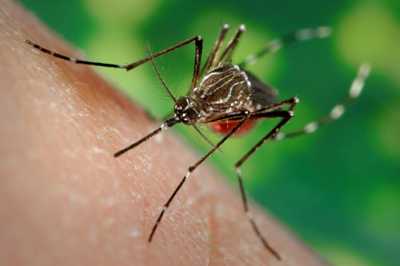AMD Project: Taking the Bite Out of Mosquito-borne Viruses
Using AMD to track changes in dengue and chikungunya viruses

Mosquito-borne viruses, like dengue and chikungunya, can change rapidly, reducing the accuracy of current diagnostic tests. AMD helps scientists monitor changes in virus genomes, which improves our ability to predict future outbreaks.
Mosquitoes can leave more than an irritating itch when they bite, they also can infect people with viruses, such as dengue and chikungunya. For decades, dengue has been found in tropical and sub-tropical regions of the world. Annually, an estimated 390 million people are infected with dengue. While chikungunya wasn’t detected in the Western Hemisphere until 2013, the epidemic has already spread to 45 countries in the region with reports of 1.5 million sick people.
Both dengue and chikungunya are spread by two species of Aedes mosquitoes: Aedes aegypti and Aedes albopictus. These mosquitoes are found throughout the Western Hemisphere, including parts of the United States. Mosquitoes become infected after biting a person sick with the virus. Once infected, the mosquito can bite other people and spread the virus.
Chikungunya and dengue cause similar symptoms, including high fever and body aches. Dengue symptoms can be so severe, in fact, that its nickname is “breakbone fever” because of the painful, sometimes debilitating joint pain it causes. Chikungunya means “that which bends up” in the Makonde language of eastern Africa and can cause intense, sometimes prolonged joint pain. Public health officials need clinicians to order diagnostic testing so that preventive measures, such as mosquito control, can be precisely focused.
However, diagnostic tests can’t always keep up with changes in viruses. Dengue and chikungunya have RNA genomes that can change rapidly, which can reduce the accuracy of diagnostic tests. For example, a 2010 dengue outbreak in Micronesia nearly went unrecognized because the virus had changed and the existing test could no longer detect it. Fortunately, CDC and collaborating institutes around the world used advanced molecular detection (AMD) to sequence the RNA genomes of thousands of existing dengue virus strains collected over the previous 20 years. With this information, CDC developed a new diagnostic test more able to detect all current strains of dengue virus in most patients. The new test is used globally for accurate diagnosis—a much more difficult and lengthy task without AMD.
Using AMD, CDC scientists can monitor changes in virus genomes, which improves understanding of transmission and ability to predict future outbreaks. Through this work, scientists will be able to develop highly specific diagnostic tests for some emerging viruses that would otherwise be confused with known viruses. This is the case with Zika, which has recently been reported for the first time in the Western Hemisphere and can be confused with dengue. By routinely monitoring pathogens with AMD, scientists will be able to more quickly and accurately diagnose the sick and better respond to epidemics.
- Page last reviewed: November 6, 2015
- Page last updated: November 6, 2015
- Content source:


 ShareCompartir
ShareCompartir